Recently, a short documentary published on the Nat Geo webpage put the spotlight on a popular art that has existed only in the Peruvian Andes for hundreds of years. It is the retablo, a singular handicraft that hasn’t disappeared despite the fact that there are only a few master retablo artisans. Arturo Ramos, a young voice for this art, believes that all is not lost. “We need to motivate more people to become involved with this art,” he says hopefully.
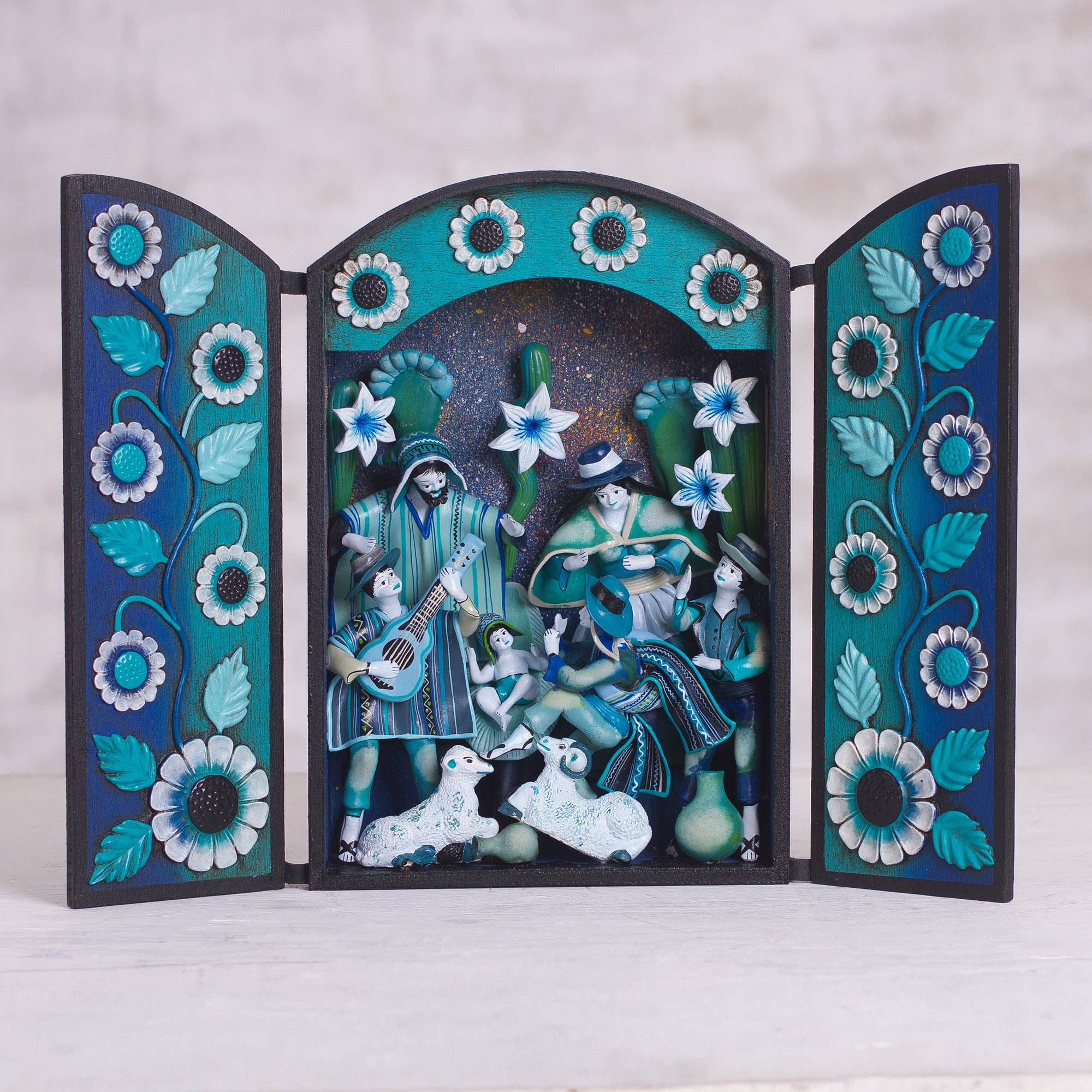
Click Image For More Details
Jose Arturo Ramos Vallejo is the irrefutable proof that the Ayacuchan retablo, an Andean art with hundreds of years of presence in Peru, will never be destined for extinction. The reason? Because there are still other young artisans like Jose who make these colorful dioramas a profitable way of life, although on a small scale. This means the popular tradition will never die out.
This 36-year-old Ayacucho man is the descendant of generations of artisans in whose hands rests the future of an Andean people’s identity. “I feel a bit of pride to live in Ayacucho with all its cultural wealth. But I also feel bad that some cultures are being lost,” Jose said worriedly in a short documentary published on the National Geographic web page.
Ayacucho, capital of popular art
It’s been a little over a month since Jose Ramos and other master artisans played a role in a film short about the retablo, an art form rich in history and culture. To learn more about this unique handicraft, we decided to go to Ayacucho and visit the workshop of this talented young man, who is also a NOVICA-featured artisan.
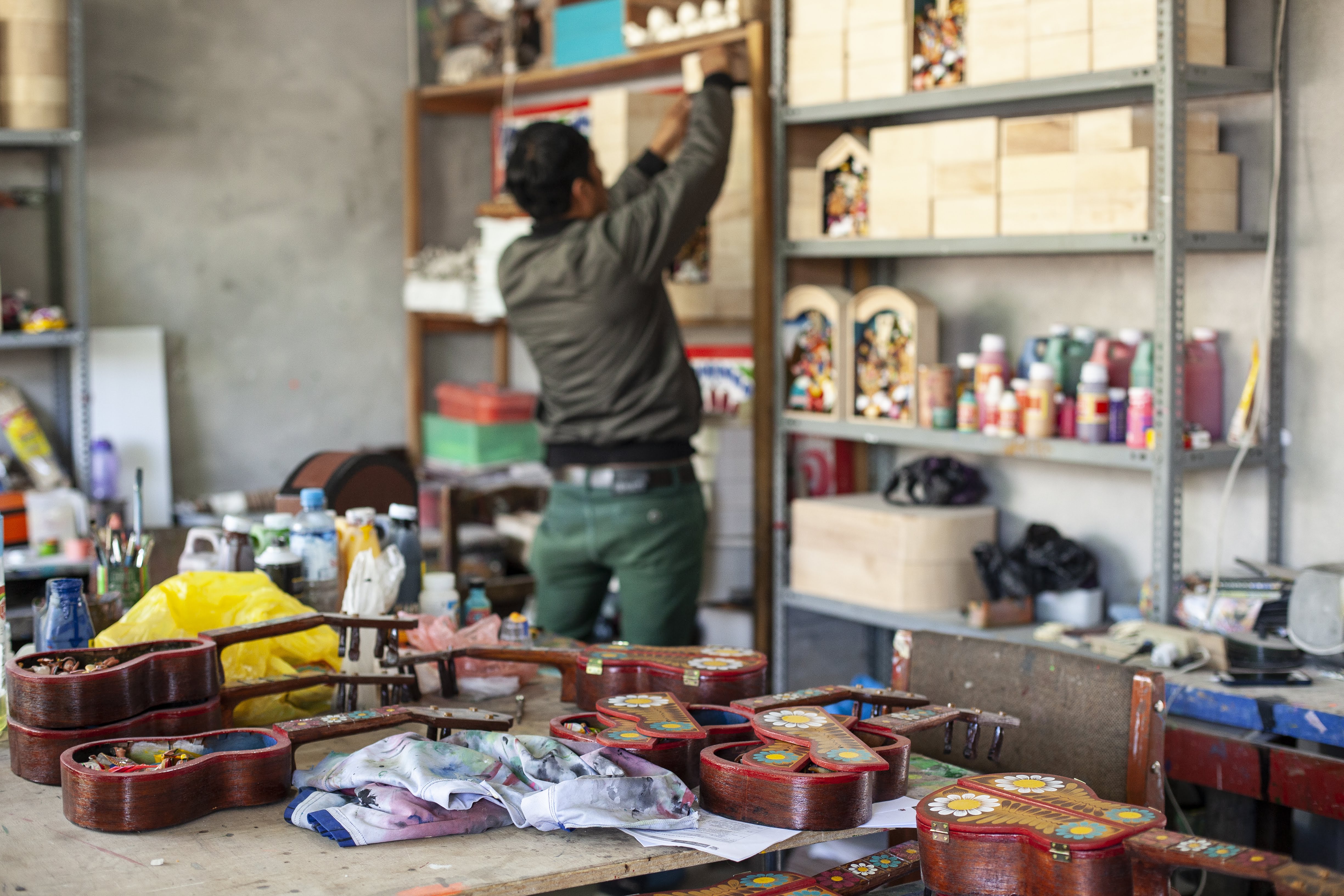
Our visit to this colonial city was a real privilege. Jose Ramos was correct about Ayacucho. Here or there… it doesn’t matter what part of the city you’re in — art is alive on every street corner. Visitors fall in love with everything here, from the cobblestone streets to the red tile roofs.
Along with its picturesque Andean scenery, Ayacucho surprises its visitors with its beautiful retablos. Jose knows this well and he has crafted them since he was only nine years old. Jose’s father learned from his father, Maximo Ramos, and he in turn, from his father, Donato Ramos. Thanks to the influence of both men, Jose was able to begin at a very young age.
So while most of his friends played with small plastic trucks and lead soldiers, Jose crafted his first religious images by hand with a mixture of plaster and potato. Then, with his father’s help, the boy built his first wood boxes to house the figurines.
“There are people who want their children to become doctors or lawyers or accountants. That’s why this art is being lost. And there aren’t many people who work in the traditional handicrafts anymore. Unfortunately, this process is very slow. And there are fewer young artisans than before,” he says. His concern is obvious as he sees fewer and fewer young people taking an interest in this art form.
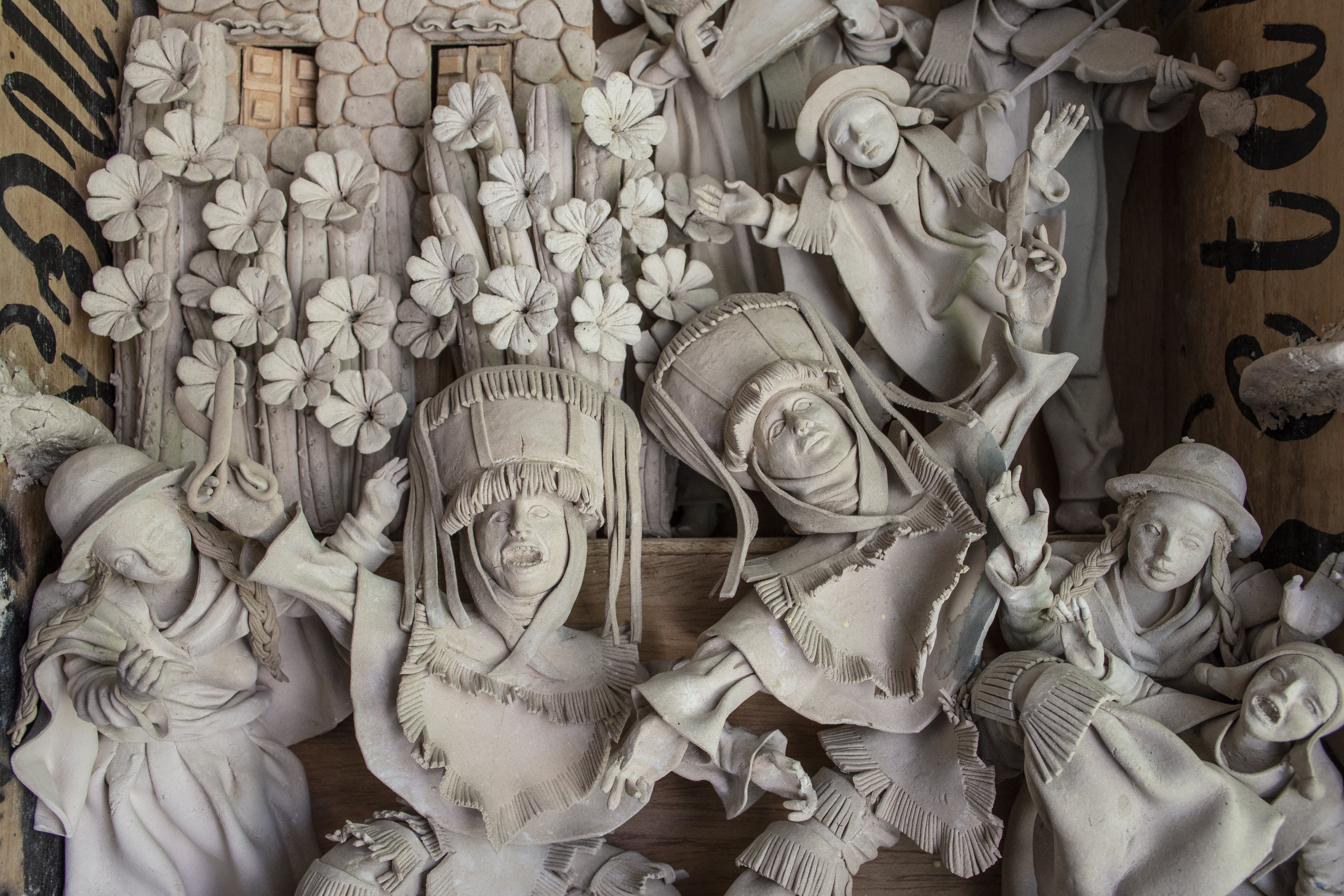
But his worry lasts only a few seconds. The young master artisan affirms he won’t stand around and do nothing about it. To the contrary, he’ll continue talking about the customs of the rural areas and the stories of his hometown through his retablos.
“I think that people should place more value on the traditions and experiences that our people want to share […]. and what better way to make them known throughout the world […]? I believe this documentary is important because it helps us [artisans] to be a voice so that people can see the real Peru. We can also depict our saints’ days and religious celebrations, along with our folklore,” he says. He is grateful this short documentary will help promote the work of hundreds of artisans who still work at this meticulous art.
From religious art to popular art
In fact, Ayacucho retablos belong to a tradition that goes back hundreds of years. They originated during the colonial period. It’s said that the Spanish priests brought their saints to the New World — America — in small wooden boxes. As part of their evangelization process, each one set out on an odyssey to the villages in the Peruvian sierra, taking several boxes with images of Catholic saints.
With time, these came to be known as “Boxes of Saint Mark,” with representations of saints and patrons of the harvest or of livestock in the upper part, and different rural activities in the lower portion.
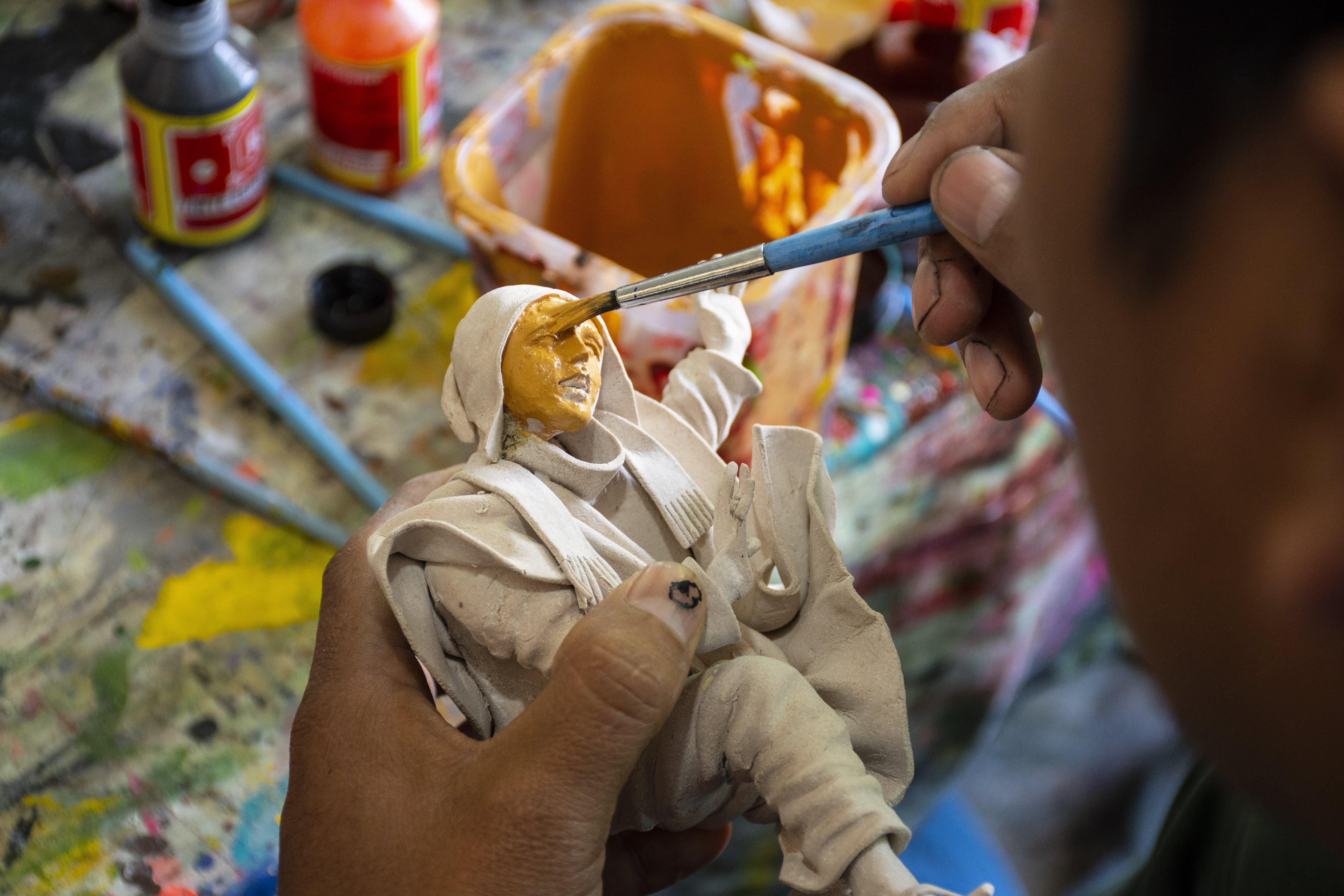
It wasn’t until 1940 that Ayacucho’s traditional art became popular throughout Peru. From then on, Ayacucho retablos were modified inside and out. Nativity scenes, Christmas and the ceremonies of Holy Week that people were accustomed to seeing were replaced by distinctive themes relating local customs, such as saint’s day festivities, traditional folk dances, rural scenes, and agricultural work.
Retablos that tell stories
Although it seems simple, it takes a lot of patience and, especially, experience to create a retablo. “Unlike with other handicrafts, to create one, you must work in parts. You must recreate the movement of the people you depict, paint each figurine and put them together one by one as though you are working on a puzzle.”
But, where does so much creativity come from? How is one able to recreate impressive Andean scenes? For Jose Ramos, inspiration comes from his memories and the stories he was told when he was a boy, Many times, they are the experiences of his childhood that come to mind, as though he was trying to travel to the past.
“In my retablos, I portray our folklore, such as the Dance of the Scissors, the bullfights, and the traditional yawar, featuring a condor and a bull. Sometimes I create small shops selling masks or musical instruments, other times I depict the harvest of tunas, the fruit of the prickly pear cactus, or the potato harvest or simply life in the countryside […]. In general, they’re the experiences of my grandparents,” he emphasizes.
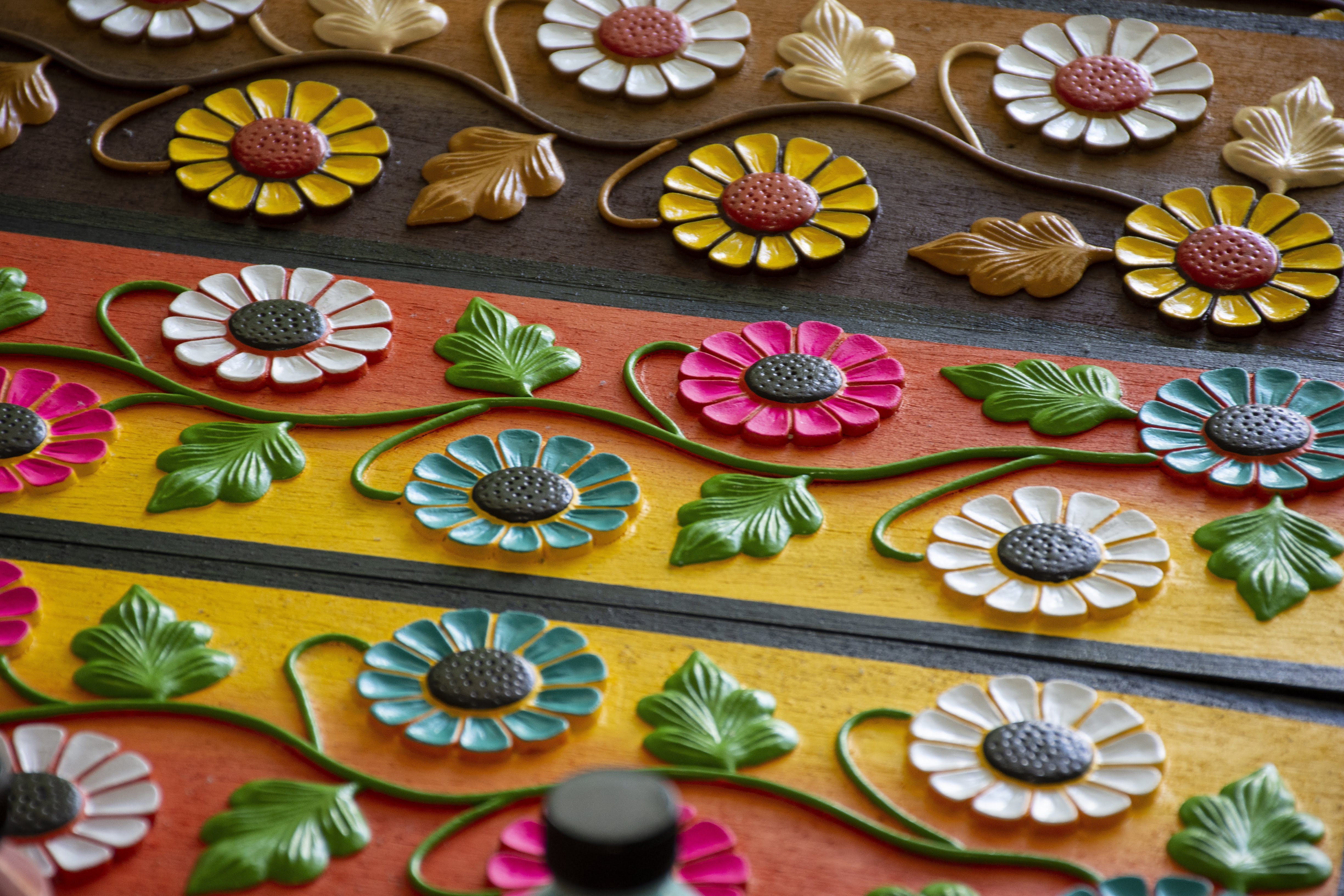
Unfortunately, an artisan’s memories aren’t always happy ones, at least they aren’t for Jose. Every time I ask about his childhood, he has to recall his experiences in the 1980s. He always remembers terrifying scenes from that time. “Everything was like fireworks. Every day, they threw bombs. There were shoot-outs in my neighborhood and you could always find a dead person on a street corner. These were very tough years I had to face as an eight-year-old boy. Fortunately, none of my family members died. Sometimes, my father and uncles were confused with terrorists and were detained by the police,” he says as he describes that terrible period of his life. It was a dark past which he couldn’t escape, as he didn’t have the money to flee and start over from zero. He stayed and tried to survive as the others did.
Soon after living through the civil war, some artisans began creating retablos with designs that showed scenes from that horrific period for the people of the Peruvian sierra. Others preferred to continue showing the traditional customs of their towns and forget that bloody past.
“I especially enjoy creating contemporary scenes. I’d like to make many more new designs but I don’t have the time. I always seem to have orders to fill so I don’t have a lot of time left to do what I like,” the artisan says. He later reveals that he has a dream to fulfill and that is to have his own gallery of popular art where people can appreciate a series of works on the history and culture of Peru, For this, he’ll need money and he’s saving up for it.
During the interview, Jose takes a moment to emphasize that the life of a retablo artist is one of sacrifice. Not just anyone can master this work. “You can’t learn this art in a single day. You need to spend time in the workshop, just as cooks must spend time in the kitchen. I have almost 23 years of experience and this has given me many memories I can use to create a variety of retablos. Perhaps, in a year, anyone can make a mold and carve wood but he or she will not be able to achieve the artistic details that require years of experience to master,” he says.
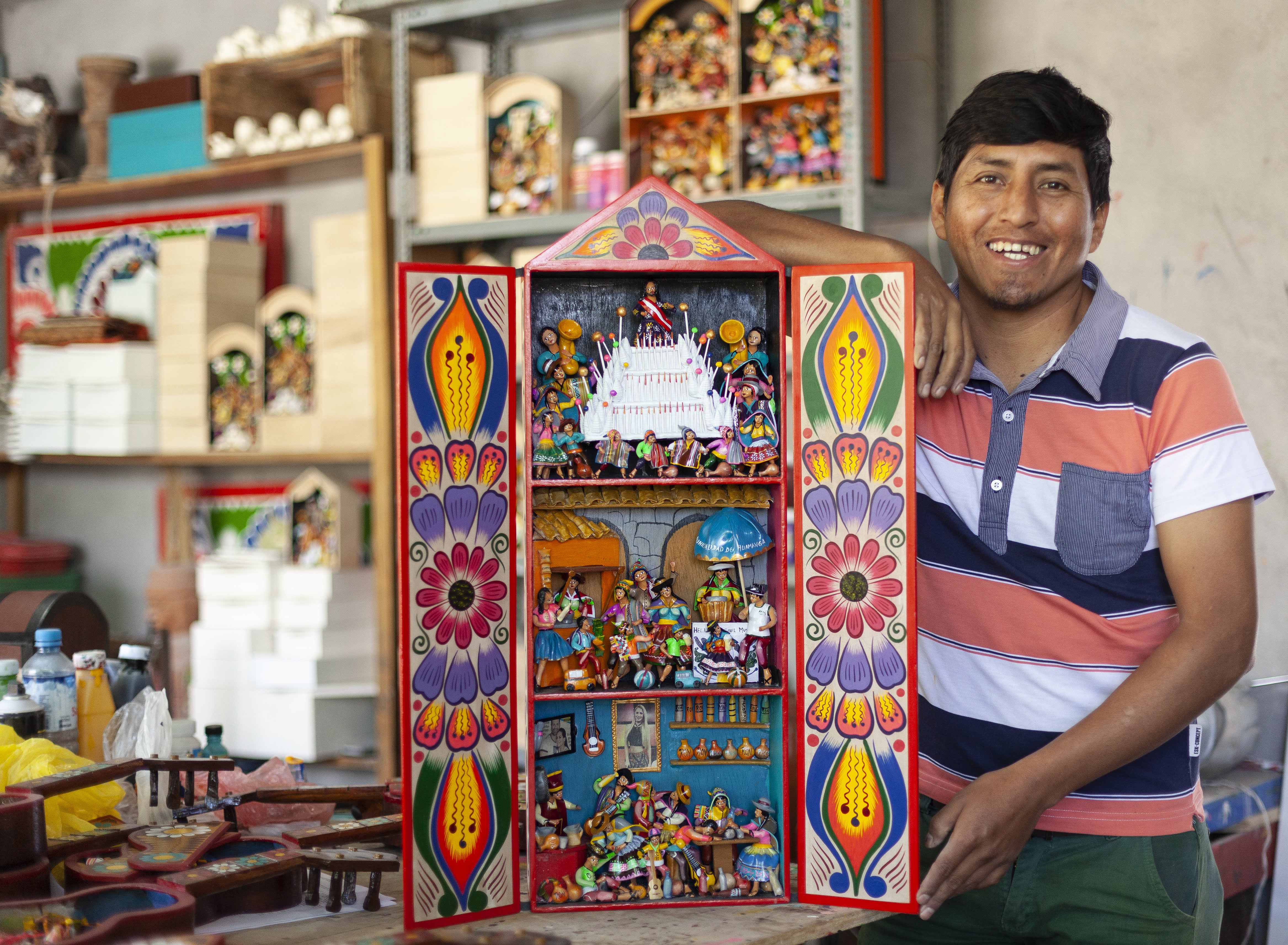
It is precisely because of this that many young people decide not to venture into the world of Ayacucho art. “They are few. For example, of 20 students in the Ayacucho School of Fine Arts, only one may decide to craft retablos. As a teacher, I’m training young artisans. So far, I’m working with four young people, some of whom began the process of becoming a retablo artist at the age of ten,” Jose says with enthusiasm. He knows his legacy will continue for some years to come.
“My wish is for people to accept what we want to communicate with our experiences and folklore. I hope to motivate more people to take up this art form and I want them to appreciate what we offer with our retablos,” he says. So be it, master artisan. Thank you for continuing to share this precious legacy!
Interview of Jose Ramos for NOVICA by Gunther Felix. 2018.
Jose’s collection may be viewed here.




